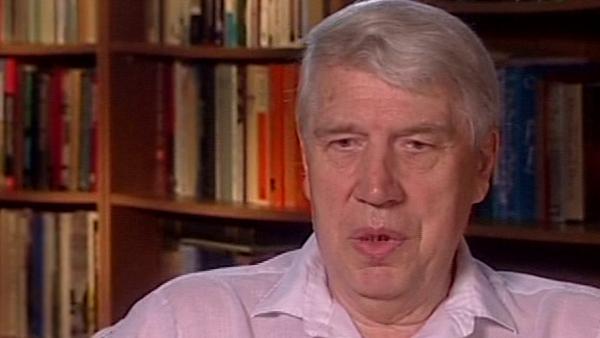NEXT STORY

Using cytotoxicity and immunofluorescence
RELATED STORIES

NEXT STORY

Using cytotoxicity and immunofluorescence
RELATED STORIES


|
Views | Duration | |
|---|---|---|---|
| 51. Difficulty of explaining the H2 system | 33 | 05:47 | |
| 52. Working on H2 with Hugh McDevitt | 86 | 04:50 | |
| 53. The two-locus model of H2 | 37 | 07:06 | |
| 54. Publishing a controversial essay | 60 | 03:53 | |
| 55. Presenting the H2 locus model in Asilomar | 32 | 02:17 | |
| 56. Editor-in-chief of the new Immunogenetics journal | 36 | 03:44 | |
| 57. The role of lymphocytes in H2 | 26 | 04:30 | |
| 58. Using cytotoxicity and immunofluorescence | 37 | 04:09 | |
| 59. Why it took us so long to find these antibodies | 28 | 05:36 | |
| 60. Competing with Shreffler's lab | 25 | 02:55 |


So, there was a lot of interest after 1970 in the H2 complex but the main question was that, as I mentioned before... so there were the two loci at the ends of the complex, and there was... it seems from the recombination analysis there was a long segment in between these two loci and the question was what was in that segment, and primarily the main question was what were the IR1 and all the other immune response loci that seemed to be associated with H2 and that seemed to be mapping in that region? What was the product of the genes? They were defined only by a phenomenon, by a difference in immune response that can be... could be mapped into that region, but one would expect that there would be some product protein or some carbohydrate or who knows what, that would be the direct, let's say, molecule that IR1 gene specify. So what was it? And of course a number of laboratories were eager to find out so there was a race... who is going to be the first to determine what was going on in that region.
We of course became involved in it too, and the principle approach was to take the H2 recombinant strains, select such combinations which would be identical at the K and D... so to have a pair of strains that would be identical at the extreme ends of the H2 complex and immunise between them. So take spleen cells or some other tissues from one strain, inject them in the other and then look for antibodies. I should emphasise that all the work before on H2 was done... on the serology of H2... was done with antibodies obtained from the serum that were tested on red blood cells. So they were, by definition, blood group antigens but... so the entire H2 chart was based on this assay 'agglutination of erythrocytes'. Well, the immunisation in the combinations that were identical in the K and D never produced any antibodies that would be reacting with red blood cells, so eventually we realized that we have to look somewhere else, that perhaps these antigens, if they really exist must be expressed on some other cells than erythrocytes, in contrast to the K and D region antigens. So the question was what method to use for the detection. An obvious candidate for the expression of these antigens were lymphocytes, and lymphocytes at that time were already known to be a crucial player in the immune response. So, if it was something that concerned the level of antibody production or other forms of immune response, the lymphocytes could be expected to be involved in some important way, so perhaps the genes could be expressed on the surface of the lymphocytes. There was no guarantee of course that they are on the surface, but that was the first place to look for them.
Born in 1936, Jan Klein is a Czech-American immunologist who co-founded the modern science of immunogenetics – key to understanding illness and disease. He is the author or co-author of over 560 scientific publications and of seven books including 'Where Do We Come From?' which examines the molecular evolution of humans. He graduated from the Charles University at Prague in 1955, and received his MS in Botany from the same school in 1958. From 1977 to his retirement in 2004, he was the Director of the Max Planck Institute for Biology at Tübingen, Germany.
Title: The role of lymphocytes in H2
Listeners: Colm O'hUigin
Colm O'hUigin is a senior staff scientist at the US National Cancer Institute. He received his BA, MSc and PhD at the Genetics Department of Trinity College, Dublin where he later returned as a lecturer. He has held appointments at the Center for Population and Demographic Genetics, UT Houston, and at the University of Cambridge. As an EMBO fellow, he moved in 1990 to the Max Planck Institute for Biology in Tübingen, Germany to work with Jan Klein and lead a research group studying the evolutionary origins of immune molecules, of teeth, trypanosomes and of species.
Duration: 4 minutes, 30 seconds
Date story recorded: August 2005
Date story went live: 24 January 2008